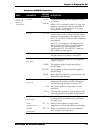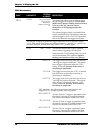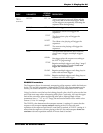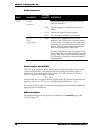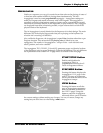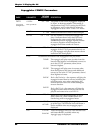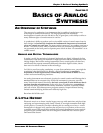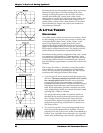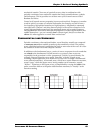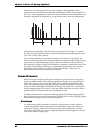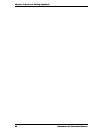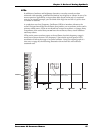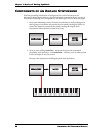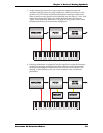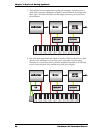
Chapter 3: Basics of Analog Synthesis
ANDROMEDA A6 REFERENCE MANUAL 83
mechanical sounds. Clever use of aperiodic waves, often in combination with
periodic waveforms, have resulted in sounds that closely resemble drums, cymbals
and helicopters. The A6 provides two of these non-cyclical sound sources called
Random and Noise.
Central to all sounds are two properties frequency and amplitude. Frequency is another
word for pitch. Low notes on a musical instrument, for example, are said to have a
low frequency; high pitched notes have a high frequency. Amplitude is commonly
associated with “amount” and often (but not always) refers to the volume level of a
sound: high amplitude means loud, low amplitude means soft or quiet. Frequency
and amplitude are also used to describe the properties of control signals that are not
audible themselves – you can’t actually hear a vibrato signal, but you can hear the
effects of it when applied to a sound. More on that later.
FUNDAMENTALS AND HARMONICS
Periodic waveforms, when analyzed further, reveal that they actually are composed
of numerous waves that combine to make up the sound that we hear. The primary
wave, called the fundamental, establishes the pitch or note value of the wave. It is also
the loudest of all the waves that comprise a sound.
In addition to the fundamental wave, a series of waves are present in each sound that
are related to the fundamental. Called harmonics or overtones, these waves are
responsible for the waveform’s timbre (pronounced TAM-ber) or tonal identity. For
example, Sine and Triangle waves sound “flute-like” with the Triangle wave
sounding a little brighter due to its harmonics (a Sine wave is simply a fundamental
wave without harmonics). A Sawtooth wave, which has a certain harmonic structure,
sound “raspy” while the Square wave, having another set of harmonics, sounds
“hollow”. Variations on the Square wave, accomplished by varying the width of the
pulse, sound less hollow as the pulse width becomes narrower, to “nasally” at the
narrowest setting.



